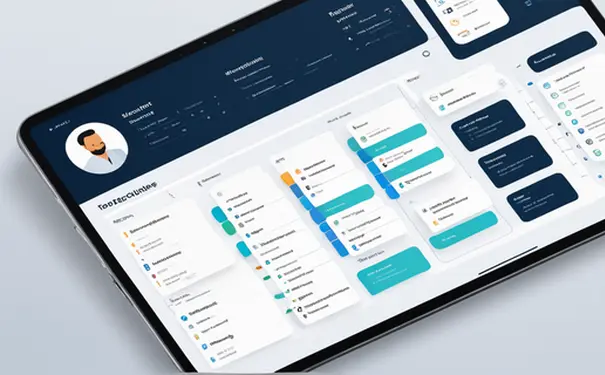ITSM (Information Technology Service Management) is key to the efficient operation of modern enterprises. The editor of Downcodes will explain the concept, importance, implementation process and future trends of ITSM in detail. This article covers the core elements of ITSM, ITIL framework, key processes, required tools and technologies, implementation challenges and solutions, and predicts future trends, aiming to help you fully understand ITSM and improve your IT management capabilities.

ITSM is the abbreviation of Information Technology Service Management. Its core concept is to regard information technology management as a service, aiming to improve the management efficiency of IT service providers, improve service quality and meet business needs. In the ITSM framework, IT services are usually planned, delivered, operated and controlled according to specific best practice methods, such as ITIL (Information Technology Infrastructure Library). ITSM not only focuses on the technology itself, but also focuses on using these technologies to provide value to customers.
1. The concept and importance of ITSM
ITSM is a management method with process management as the core and continuous improvement of service management processes as the goal. Under today's customer-centric service concept, the importance of ITSM is reflected in several aspects: it helps optimize resource allocation, improves business transparency in IT support, strengthens control of service quality, and enhances customer satisfaction. By implementing ITSM, enterprises can ensure that IT departments support business goals more efficiently and provide the right amount of services at predictable costs.
2. The relationship between ITIL framework and ITSM
ITIL is the most extensive set of framework guidelines and best practices for implementing ITSM. It provides clear steps and processes for the implementation of ITSM, including service strategy, service design, service transition, service operation and continuous service improvement stages. Adopting the ITIL framework can help enterprises establish efficient and reliable IT service management processes, and continuously improve service levels and business capabilities by refining and managing each stage of the service life cycle.
3. Key components of ITSM process
There are a series of key processes in ITSM, such as incident management, problem management, change management, configuration management and release management. These processes are designed to ensure the stability and reliability of IT services, and are also the basis for continuous optimization and improvement of service quality. The design and implementation of the process should comprehensively cover all aspects of the service life cycle, providing enterprises with a path aimed at systematically solving service challenges, reducing disruption and improving efficiency.
4. ITSM tools and technical support
Effective ITSM implementation requires the support of a series of tools and technologies. This includes help desk software, CMDB (configuration management database), automation tools, and various monitoring and reporting tools. The application of these technologies and tools can greatly improve the efficiency of ITSM processes, reduce the error rate of manual operations, and speed up response times. In addition, with the development of artificial intelligence and machine learning technology, these tools are constantly integrating intelligent functions to further enhance ITSM capabilities.
5. ITSM implementation challenges and solutions
Although ITSM brings many benefits, it often faces challenges during the implementation process, such as internal resistance to change, process complexity, insufficient resource allocation, and lack of suitable tool support. To address these challenges, companies need ongoing communication and training to ensure employees understand and embrace new processes and tools. At the same time, focus on appropriate project management and implementation strategies, and be flexible during implementation to adapt to actual circumstances.
6. Predict the future trend of ITSM
With the rapid development of new technologies, the future of ITSM will be increasingly characterized by automation, intelligence and integration. Cloud services, big data analysis, and artificial intelligence will play a more important role in IT service management. These impacts will push traditional ITSM practices to evolve in a more efficient, flexible and innovative direction. When enterprises consider future ITSM implementation, they need to pay close attention to the development of these technologies to seize future competitive advantages.
1. What is the definition of ITSM? ITSM refers to Information Technology Service Management, a complete management framework designed to manage and provide high-quality information technology services to meet the needs of organizations and customers.
2. What is the significance of ITSM to enterprises? The implementation of ITSM can help enterprises improve efficiency, reduce costs and maximize customer satisfaction. By implementing standardized service processes and providing consistent service quality, enterprises can better respond to customer needs, improve work efficiency, reduce fault repair time, and ensure continuous improvement.
3. What are the key components of ITSM? Key components of ITSM include service strategy, service design, service transition, service operations and continuous improvement. The service strategy phase involves defining the organization's business goals and IT strategy. The service design phase involves determining the overall framework and processes of the IT service. The service transition phase involves the introduction of new or improved services into the production environment. The service operations phase involves providing and supporting IT services. The continuous improvement phase involves monitoring and improving the performance of the service. By considering these components comprehensively, ITSM can help organizations provide high-quality information technology services.
I hope this article can help you better understand ITSM. The successful implementation of ITSM requires the participation and continuous improvement of all employees of the enterprise in order to truly maximize the value of IT services.